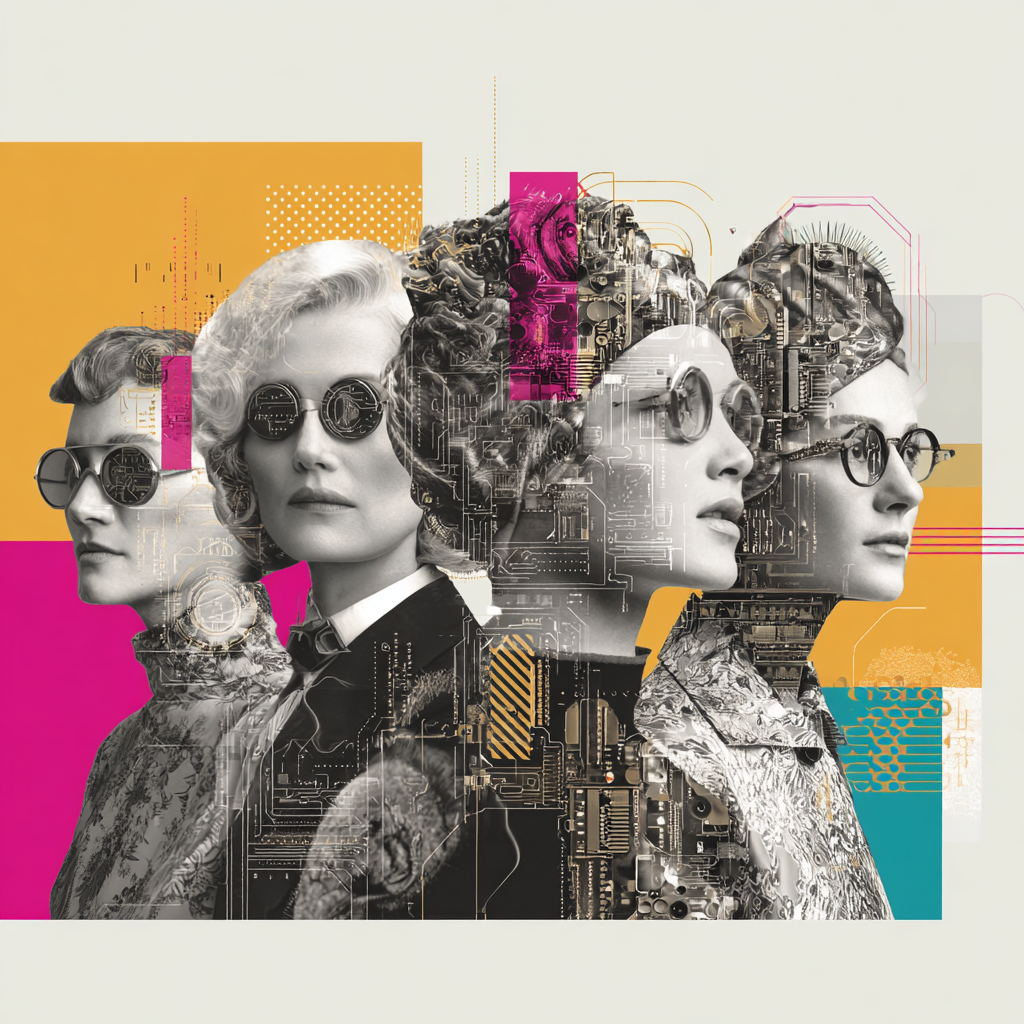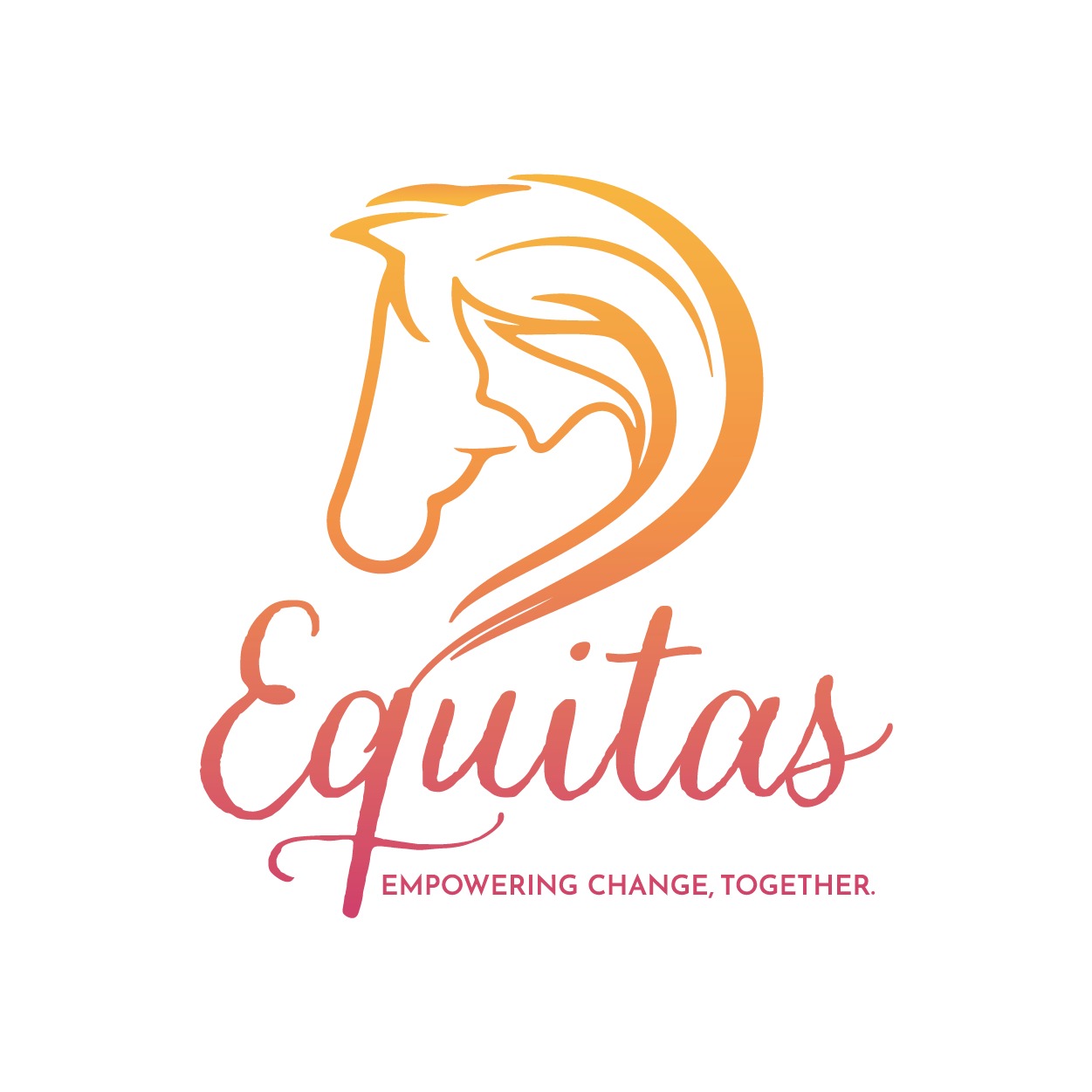How AI Will Evolve Women's Lives

Today, I am looking at the initial research behind AI system builds for women worldwide based on current behavioural patterns. I am going to take you on a journey across the next 2-3 weeks where we build a full system to be used by women worldwide.
Since I am already doing this and we promised to show you all more behind the scenes action, I said I would track all this and bring you on the journey with me.
So to start....
I usually go to Grok and Perplexity when doing this kind of research and investigative work and then funnel the findings into ChatGPT to initiate the initial discussions on patterns and behaviours. The I might ask ChatGPT to do a similar deep research paper but today, I didn't I just went with Grok... (or the AI on X for those that don't know what Grok is).
Today, I thought it would be cool to share the starting point so you can see where ideas and thoughts come from. It is why we are building the Equitas Intelligence Reporting Engine (EIRE), so we can get more specific on the data available for female equestrians worldwide but the available date is severely limited at the minute even if 73% of the Equine Industry is female. That is for another time...
Today and across the next couple of weeks as we build out a system, we cast the net a whole lot wider to understand habits and behaviours of women online and how AI will align with those and potentially deliver better equity worldwide...
Here was my opening question... simple but decisive.
I want a deep research paper on "How ai will evolve the lives of women around the world and where the true potential is to drive change and equity through AI for women worldwide".
How AI Will Evolve Women's Lives:
AI has the potential to transform women's lives by addressing long-standing inequalities. It can automate repetitive tasks, freeing up time for women who often handle more domestic responsibilities. AI tools can also act as mentors, helping women gain new skills and boost confidence in professional settings, such as providing feedback on salary negotiations or presentations. For example, AI can help overcome barriers like lack of mentorship, where women are 24% less likely than men to receive advice from senior leaders.
In healthcare, AI is already making strides, such as improving maternal health by identifying access to emergency obstetric care facilities, which is crucial for women in low-income areas . This can lead to better health outcomes and save lives.
Where True Potential Lies for Change and Equity
The true potential of AI to drive change and equity lies in ensuring women's active participation in its development and use. Increasing the number of women in AI roles—from researchers to leaders—can help create technologies that address women's specific needs, reducing biases that currently affect 44% of AI systems. Bridging the digital divide, where only 20% of women in low-income countries are connected to the internet, is vital to ensure AI benefits reach all women.
Inclusive governance, such as the 2024 Global Digital Compact, can prioritize gender equality in AI, preventing the perpetuation of existing gaps. Companies can also play a role by offering AI training during work hours and increasing female representation in IT, as seen in tech firms that boosted retention by 25% through mentorship.
The Evolution of AI and Its Impact on Women’s Lives and Equity in 2025
This report explores how artificial intelligence (AI) is poised to evolve the lives of women globally and identifies the key areas where its true potential lies in driving change and equity. Drawing from recent research, industry reports, and case studies, this analysis provides a comprehensive overview of the opportunities and challenges, ensuring a detailed understanding for stakeholders interested in gender equity in technology.
Current Landscape: Gender Disparities in AI
The current state of AI reveals significant gender disparities that could impact its evolution for women. Research indicates that women make up only 30% of AI professionals and 29% of STEM workers globally, highlighting a critical underrepresentation.
A major contributing factor is the gender digital divide, with only 20% of women in low-income countries connected to the internet, compared to higher rates in wealthier nations.
How AI Can Evolve Women's Lives
AI has the potential to significantly enhance women's lives by addressing both practical and systemic challenges. One key area is task automation, which can free up time for women who often bear a disproportionate share of domestic responsibilities. AI tools can automate administrative tasks, such as email drafting or scheduling, allowing women to focus on higher-value activities.
In the workplace, AI can act as a mentor, providing on-demand support for skill development. Research suggests women are 24% less likely than men to receive advice from senior leaders, and nearly 60% of women of color never had informal interaction with a senior leader . AI can fill this gap by offering feedback on salary negotiations, presentations, and resume achievements, helping to boost confidence and career advancement.
Healthcare is another critical area where AI can make a difference. For instance, in collaboration with the OnTime Consortium in Nigeria, Google developed a tool in 2022 to identify travel times to emergency obstetric care facilities, aiding decision-makers in improving access for women in Benin City. This initiative is expanding beyond Nigeria, demonstrating AI's potential to enhance maternal health outcomes . Similarly, AI-supported ultrasound diagnostics can address the shortage of technicians in many regions, improving prenatal care.
Education and skill development are also areas where AI can empower women. Initiatives like the World Woman Foundation's training programs for indigenous women in India and Mexico cover data annotation, AI-powered agriculture, and telemedicine, aiming to reduce poverty by up to 30% in low-income areas . These programs leverage AI's accessibility, with free tools like ChatGPT and Claude enabling women to start with simple tasks and build skills.
Workplace Dynamics: Closing the Gender Gap
In the workplace, AI adoption shows a gender gap, with 59% of male workers (18-65) using generative AI weekly compared to 51% of female workers, and the widest gap in Generation Z (71% of men vs. 59% of women) . This disparity risks magnifying imbalances, especially in "pink collar" jobs like customer service and healthcare, where women are overrepresented.
To reverse this trend, companies can focus on upskilling at scale, with 98% of employees needing AI training in the next five years. High demand exists across job types, with 77% of white-collar, 74% of blue-collar, and 71% of pink-collar workers wanting employer support, yet only 40% are believed to need it by leaders. Offering training during work hours, as seen in an international furniture business training call center workers as interior design advisers, can help.
Creating a shared vision is also crucial, engaging workers by showing AI augments skills rather than replaces jobs. For example, a tech company chose not to fill 5,000 non-customer-facing roles expected to be automated, instead focusing on reskilling. Increasing female representation in IT, where AI decisions are made, is another strategy, with examples including a tech firm addressing pay equity and family leave to boost women in tech roles, and another improving retention by 25% through mentorship.
Generation Z, familiar with AI, can mentor colleagues, with Gen Z women leading training efforts, as per Oliver Wyman Forum research.
Where True Potential Lies for Change and Equity
The true potential of AI to drive change and equity for women lies in several strategic areas, as outlined below:
| Area | Details |
|---|---|
| Reducing Gender Bias | Ensuring AI systems are developed with diverse datasets and teams to address biases affecting 44% of systems, such as job recruitment favoring males. |
| Increasing Women's Participation | Boosting women in AI roles, currently at 30% of professionals, with projections of 50% growth in lead roles by 2030, ensuring inclusive innovation. |
| Closing the Digital Divide | Bridging connectivity gaps, with only 20% of women in low-income countries online, to ensure AI benefits reach all women. |
| Improving Access to Services | Leveraging AI for healthcare (e.g., maternal health tools) and education, particularly in underserved regions, to enhance women's quality of life. |
| Addressing Systemic Barriers | Using AI to overcome mentorship gaps (women 24% less likely to get senior advice) and confidence issues, automating tasks to free up time. |
| Promoting AI Adoption | Encouraging women to use AI tools, addressing the 16 percentage point usage gap, to close workplace productivity disparities. |
| Fostering Inclusive Governance | Advocating for global models like the 2024 Global Digital Compact to prioritize gender equality, preventing perpetuation of inequalities. |
Women-led initiatives are already making an impact. For instance, Trestle Labs in India, founded by Akshita Sachdeva and Bonny Dave, developed Kibo software for accessibility across 60 global and 13 Indian languages, used at the Indian Parliament Library. The World Woman Foundation, in partnership with the US-India Strategic Partnership Forum, trains 1 million indigenous women in AI, starting with a pilot in Mayurbhanj, Odisha, covering data annotation, AI-powered agriculture, NLP for cultural preservation, telemedicine, and environmental monitoring.
Recent developments in 2025 further highlight this potential. The National Information Technology Development Agency (NITDA) in Nigeria is leading efforts to promote women in AI, setting bold digital inclusion targets.
Risks and Challenges
Despite these opportunities, risks remain. AI can perpetuate gender stereotypes, such as image generators hypersexualising women and deepfake technology disproportionately targeting women with fake intimate images. AI chatbots also give different career advice based on gender, potentially reinforcing inequalities.
Policy and Future Projections
To realize AI's potential, governments and corporations must create pathways for women through gender targets, mentorship programs, and inclusive education initiatives. The article from IMD recommends these strategies, projecting that by 2040, women could fill 40% of decision-making roles in global technology firms, up from 16% currently.
This report underscores the transformative potential of AI for women, provided that concerted efforts are made to ensure inclusivity, address biases, and promote equitable access. The data and examples provided offer a roadmap for stakeholders to leverage AI for gender equity, particularly in the context of the current time, 03:41 PM IST on Monday, June 23, 2025.
Key Citations
- Artificial Intelligence and gender equality explanation
- Women leading in fair AI for all article
- Need for more women in AI revolution article
- Stopping women falling behind in generative AI workplace story
- AI advancing women’s health globally blog
- Women avoiding AI and career impact knowledge
- Women make up 29% of AI workforce fix article
- NITDA leads charge for women in AI targets post
- Women at forefront of India’s AI revolution post
- Women’s leadership in AI era discussion post
- Women’s AI course enrollment surge post
Next step... start reviewing all this... then I will get the AI to analyse for patterns... I will also analyse for patterns separate to the AI and then we will blend these thoughts, findings and patterns together and try get a full 360 view of potential pathways forward for system building for women worldwide.
It is not doubling up the work... I think for myself and I want AI to be a different set of eyes... a different lens... I lead Equitas with my partners, with our team, I do not in anyway want to be led by what AI thinks Equitas should do...
AI is bias, it has been trained on logic I do not fully agree with and like most, find hard to understand the root of so, we always lead.
The AI is a support, it is a tool... but we have to lead. We have to decide.
In this case, this is pattern identification and then alignment and relevancy I am looking for. I'll give an update in a couple of days and you can all see how this is progressing... in a couple of weeks time, you'll have come through the whole journey of building an AI System for women with us.
Hopefully it is a journey you enjoy, that opens your eyes, expands your thoughts and shows you what is possible.
Until Next Time,
Shane


